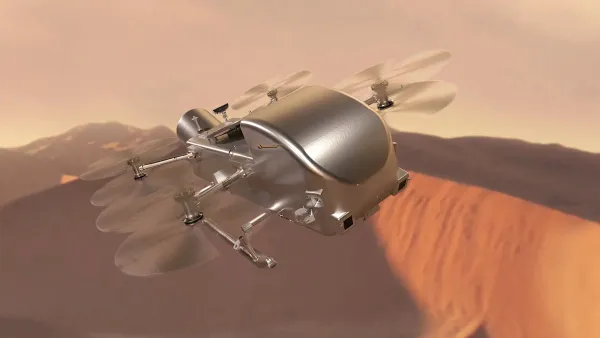The McDonnell Center for the Space Sciences welcomes Tansu Daylan, our newest faculty fellow.

Dr. Tansu Daylan joined Washington University in St. Louis in August 2023 as an assistant professor of physics and faculty fellow in the McDonnell Center for the Space Sciences (MCSS), both part of Arts and Sciences. Since then, he has been busy seeding new research initiatives, establishing his group AstroMusers, and teaching a brand-new exoplanet course in the fall.
Daylan's research program tackles two intriguing problems in astrophysics. He is searching for astrophysical signatures of dark matter to gain insights into its particle nature and he is also studying mechanisms of planet formation, evolution, and habitability through discovering and characterizing exoplanets, which are planets that orbit stars outside of our Solar System.
He is leading one of the preparatory science programs for NASA's upcoming Roman Space Telescope and participating in the ULTRASAT mission as one of the US-based Principal Investigators. He is also a member of the science team of NASA's Transiting Exoplanet Survey Satellite (TESS), having worked on various aspects of the mission as a postdoc between 2018 and 2023, including the identification of TESS Objects of Interest (TOIs). His research program uses survey data from instruments such as the ground-based Keck and Magellan Telescopes, and the space-based James Webb Space Telescope.
Daylan said, "We use exoplanets to address open questions about how planets form and evolve, with the ultimate goal of contextualizing our planet Earth, Sun, and Moon. Exoplanets additionally act as targets for searches for signatures of life beyond the Solar System. And the elusive microphysics of dark matter, which is more abundant than visible matter in the Universe, is arguably the most pressing problem in fundamental physics that motivates us to seek observational departures from our standard model of cosmology, Lambda Cold Dark Matter (LCDM)."
One of Daylan's current projects is simulating Roman Space Telescope images of cosmological strong lenses, i.e., arcs formed by gravitational lensing due to galaxies aligned along our line of sight. This research will enable precise estimates of how Roman data will be able to infer the level of sub-galactic structure of dark matter. Another current project his team is working on is using the Hubble Space Telescope to characterize the atmospheric contents of a TESS-discovered exoplanet with a gaseous envelope known as a sub-Neptune.
In addition to short-term research initiatives that rely on currently operating or upcoming observatories, Daylan has been working on developing two future mission concepts to help define the future of astronomical research. The first mission is the Advanced X-ray Imaging Satellite (AXIS), which was recently proposed to NASA as part of the Astrophysics Probe solicitation in collaboration with the principal investigator of the mission, Christopher Reynolds, who was the recent McDonnell Distinguished Lecturer. The second is a preliminary mission concept for a smaller space-based time-domain astronomical observatory envisioned to be placed in Geosynchronous Equatorial Orbit (GEO) to complement the ongoing TESS mission.
Through these research efforts, Daylan aims to enhance our understanding of planetary systems and dark matter and address profound questions about our existence and significance in the vast Universe.
Daylan's academic journey started in Turkey. After graduating from Robert College in Istanbul and double majoring in physics and electrical and electronics engineering at the Middle East Technical University in Ankara, Daylan completed his PhD at Harvard University. From there, he became a Kavli postdoctoral fellow and then a TESS postdoctoral associate at MIT's Kavli Institute for Astrophysics and Space Research. More recently, he was an LSST Discovery Alliance postdoctoral fellow at Princeton University before joining the Department of Physics in August 2023.
Regarding what brought him to WashU, Daylan said, "WashU Physics struck me as a department with an outstanding legacy in research and scholarly work. The consistent collegiate architecture of the campus was charming. I liked how diverse, well-engaged, and intellectually vibrant the students were. And the MCSS offered great resources for early-career faculty to develop a strong research program and competitively recruit an active research team. The Center has already been supporting my work on developing mission concepts."

When asked about his experience in St. Louis so far, Daylan said, "It's been great. As a child growing up with an aviator spirit, my curiosity about the Spirit of St. Louis was largely how I had known about the region until I more recently started considering a faculty position at WashU. The history of St. Louis fascinates me with its pioneering roles in urban development and early space exploration. The Gateway Arch reminds me of the Roman arches in my hometown of Istanbul. But unlike those relatively simpler Roman arches, the Gateway Arch is precisely an upside-down weighted catenary, which is the equilibrium shape a variable-thickness rope assumes when suspended under its own gravity."
Daylan also mentioned that, compared to his earlier experience in New York City and Istanbul, he enjoys the absence of traffic jams and long commute times and thinks this efficient lifestyle is better for planet Earth and his mental health. In closing, Daylan added, "Two things I wish St. Louis had are walkability and open seas… As a substitute, I have been taking peaceful walks by the lakes in Forest Park. And my favorite has been watching the sunrise on campus, especially in early October and March when the Sun aligns with the central axis of the Danforth Campus during its ascension above the horizon during an event that I guess could technically be called WashUHenge."




